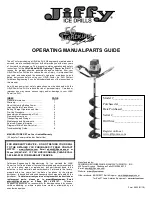
17
dimension for sheet part
5.1.4 How to find a “turn-over point”
The workpiece is mounted on the worktable. If the dimension to be measured is not
coincident with the measuring axis, it is needed to align the workpiece by finding the
“turn-over point”. For horizontal instrument, it is always needed to find the “turn-over
point”.
Operate the worktable knob to make the workpiece move or rotate; the reading will
change with the knob turning. If a reading repeats at a point, we call it “turn-over point”
or break point
. The workpiece has been aligned if it stops at the “turn-over point”.
For most cases, it is needed to find a “turn-over point” twice by using different
knobs. For example: shown as Fig.13, to measure a cylinder, first adjust the knob
according to Fig.13a to make the worktable tilt to left and right; find the minimum
reading (i.e. the first “turn-over point”) and the state. Then move the transversal
handwheel to make the measuring axis cross through the cylindrical diameter to find the
biggest reading (i.e. the second “turn-over point”).
Operate the knob slowly, in particular during approaching a “turn-over point”. It is
better to find some points in several times and compare them to confirm the “turn-over
point”.
a.
Make the worktable tilt to left and
b. Move the transversal handwheel to
right to find the minimum reading
make the measuring axis cross through
the cylindrical diameter to find the
biggest reading
Fig.13 How to find a “turn-over point”
5.1.5 Temperature affect and correction
For length measurement, the ideal condition is at 20
ambient. Make workpiece
Summary of Contents for EX-100
Page 4: ...3 Fig 3...
















































